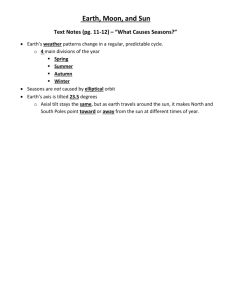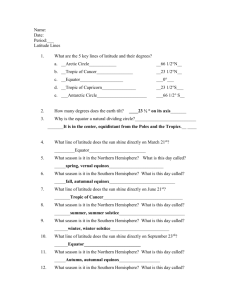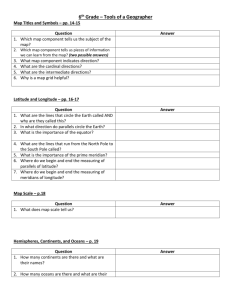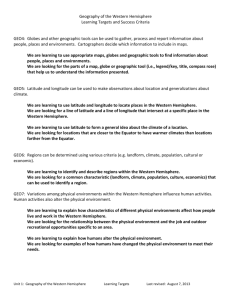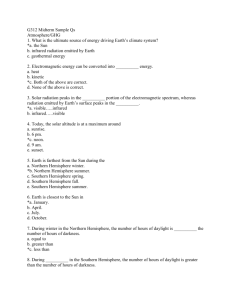Understanding the Seasons The reason that the weather is warmer
advertisement
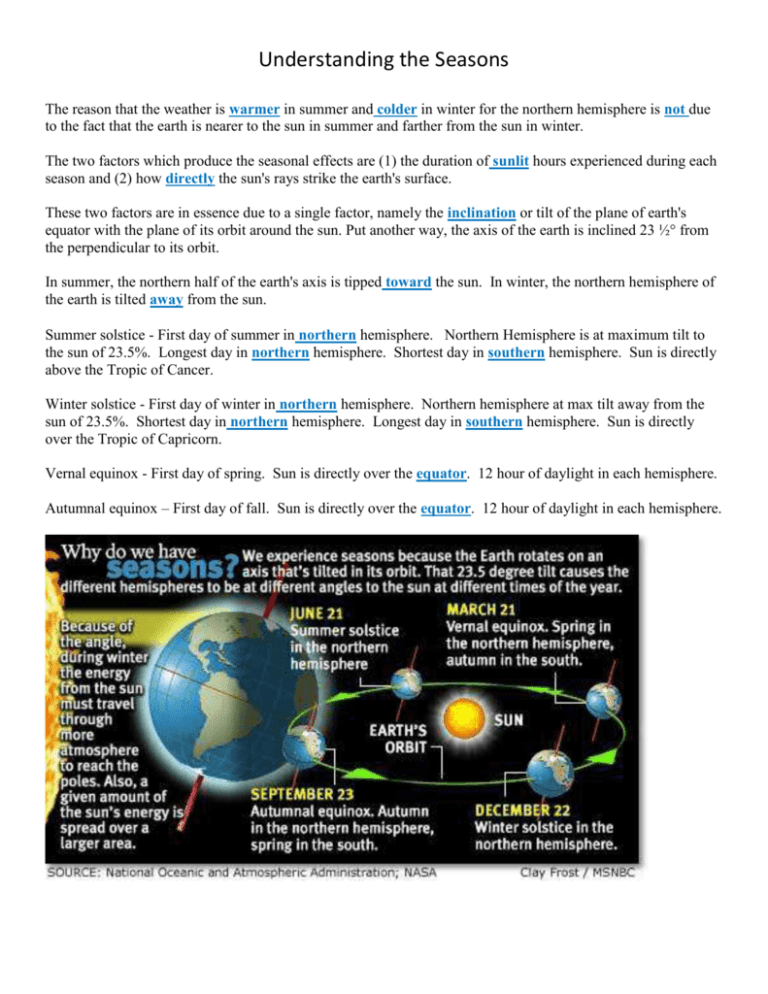
Understanding the Seasons The reason that the weather is warmer in summer and colder in winter for the northern hemisphere is not due to the fact that the earth is nearer to the sun in summer and farther from the sun in winter. The two factors which produce the seasonal effects are (1) the duration of sunlit hours experienced during each season and (2) how directly the sun's rays strike the earth's surface. These two factors are in essence due to a single factor, namely the inclination or tilt of the plane of earth's equator with the plane of its orbit around the sun. Put another way, the axis of the earth is inclined 23 ½° from the perpendicular to its orbit. In summer, the northern half of the earth's axis is tipped toward the sun. In winter, the northern hemisphere of the earth is tilted away from the sun. Summer solstice - First day of summer in northern hemisphere. Northern Hemisphere is at maximum tilt to the sun of 23.5%. Longest day in northern hemisphere. Shortest day in southern hemisphere. Sun is directly above the Tropic of Cancer. Winter solstice - First day of winter in northern hemisphere. Northern hemisphere at max tilt away from the sun of 23.5%. Shortest day in northern hemisphere. Longest day in southern hemisphere. Sun is directly over the Tropic of Capricorn. Vernal equinox - First day of spring. Sun is directly over the equator. 12 hour of daylight in each hemisphere. Autumnal equinox – First day of fall. Sun is directly over the equator. 12 hour of daylight in each hemisphere. 1) Which of these is NOT a correct explanation for the extra heating of summer for the United States? A) The Sun is much higher overhead in June than in December. B) The Earth is closer to the Sun in June than in December. C) The Sun's rays strike us more directly in June than in December. D) The Sun is up longer in the summer than in the winter. 2) Between the summer and winter solstices, how much does the altitude of the noon sun vary for observers in the United States? A) None; the Sun always rises due east and sets due west. B) 23.5 degrees C) 47 degrees D) 90 degrees 3) Between the summer and winter solstices, how much does the altitude of the noon sun vary for observers in the United States? A) None; the Sun always rises due east and sets due west. B) 23.5 degrees C) 47 degrees D) 90 degrees



